
archives for 07/2018
I didn't want to hammer fence staples while standing on a ladder so instead I drilled small holes on the top corners of the 4x4's that can fit 16 gauge wire through to attach the top fence layer.
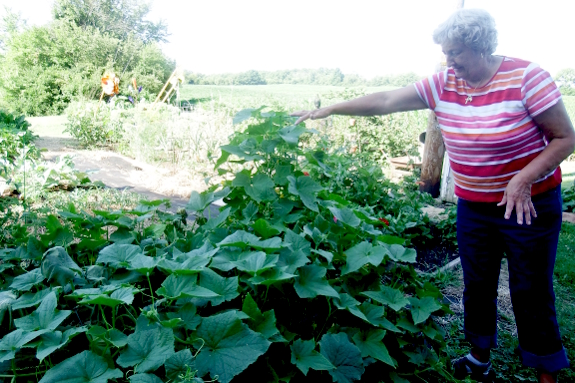
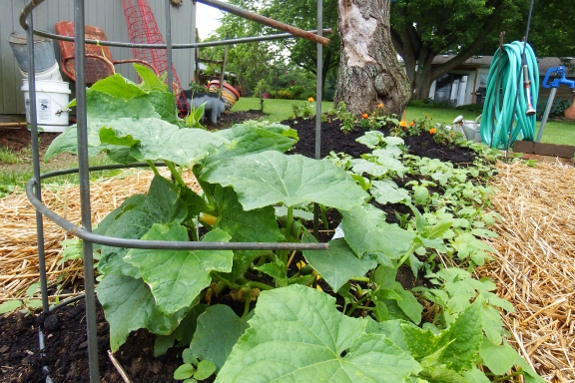 We went to visit my mushroom
compost mothers-in-law last weekend and were stunned by the
growth of their cucumbers from one month to the next.
We went to visit my mushroom
compost mothers-in-law last weekend and were stunned by the
growth of their cucumbers from one month to the next.
The only downside of
this kind of exuberant growth is the difficulty of finding the fruit.
"The vines look beautiful," Rose Nell told me, "but there's only been
one cucumber big enough to pick."
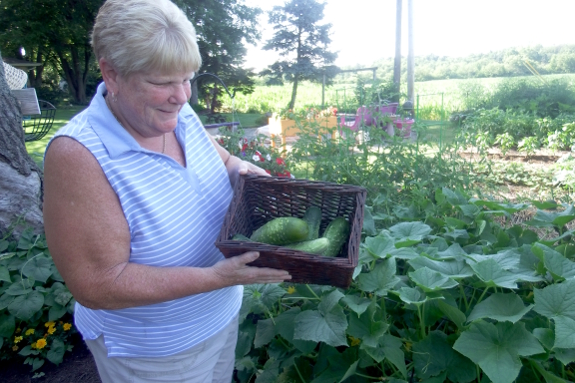
"Are you sure?" I
countered. I got down on my knees and peered into the
cucumber monster. Soon, our basket was full of crunchy fruits.
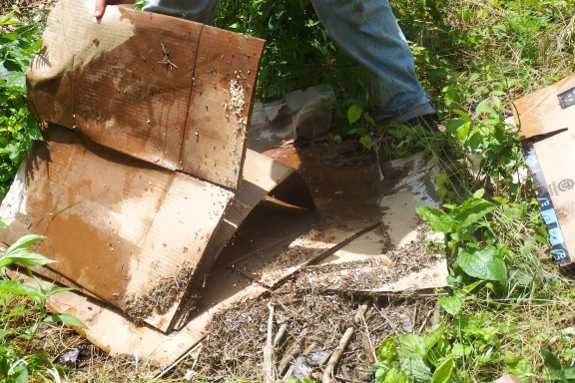
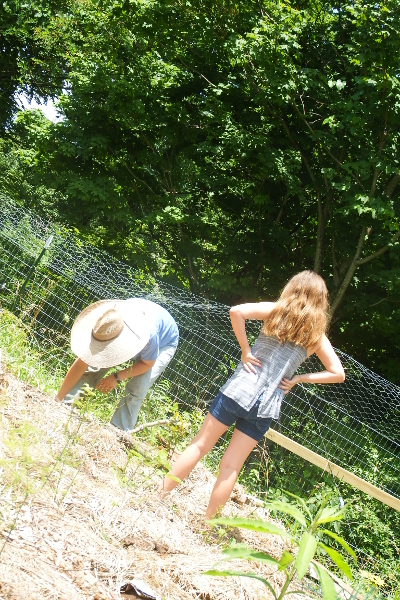 "How
are you going to deal with weeds/grass that grow up around the bottom
of the fence?" --- Nayan
"How
are you going to deal with weeds/grass that grow up around the bottom
of the fence?" --- Nayan
My current plan is to
use a layer of cardboard covered by a layer of wood chips for a
perimeter pathway around the inside of the garden fenceline, combined
with a layer of cardboard covered by a layer of compost for a
flower/berry/undecided bed around the outside of the garden fenceline.
Of course, this lofty
plan depends on lots of cardboard, wood chips, and compost. We'll see
if the supplies and/or my back give out before the kill mulch is
complete. If so, we might follow other readers' suggestions and burn
the weeds off instead.
Stretching the top 2 feet of garden fence to complete an 8 foot section.
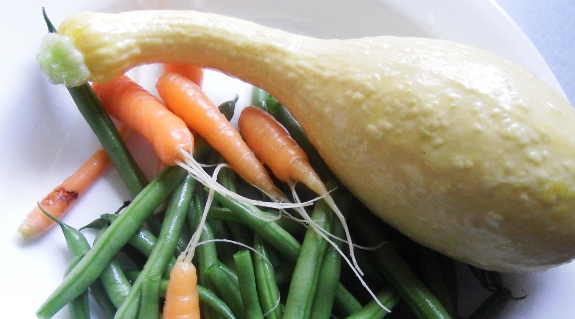
It's astonishing how
much the garden grows now that the deer can't enter to dine. Without
errant nibblers, we're now growing half of our daily veggies. Summer
squash, green beans, eggplants, and baby carrots are already on the
menu, with tomatoes and cucumbers slated to come in any day now.
On the deer-pressure
front, I'm now guessing southeast Ohio has about twice the population
as southwest Virginia. No wonder the serious gardeners around me have
perfected the Fort-Knox-style fence.
How is the Honda mower
working out in the new location?
We are still happy with it.
The self propelled feature
continues to be my favorite part. The manner in which it engages is
better than all the other self propelled mowers I've used in the past.
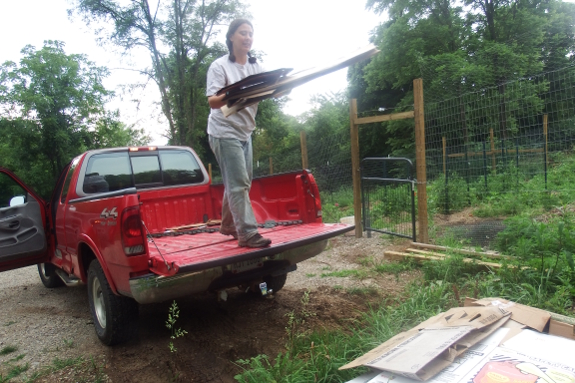
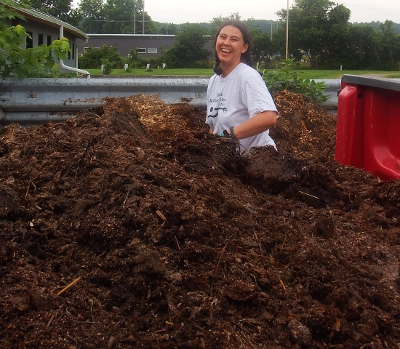 Thursday afternoon, Mark and
I stocked up on biomass. We snagged as many cardboard boxes as we could
fish out of the recycling dumpster, unloaded that, then filled the bed
halfway up with horse manure.
Thursday afternoon, Mark and
I stocked up on biomass. We snagged as many cardboard boxes as we could
fish out of the recycling dumpster, unloaded that, then filled the bed
halfway up with horse manure.
As of Friday lunchtime,
every bit of the manure and most of the cardboard was already used up.
But I've got two big rows just waiting for strawberry plants!
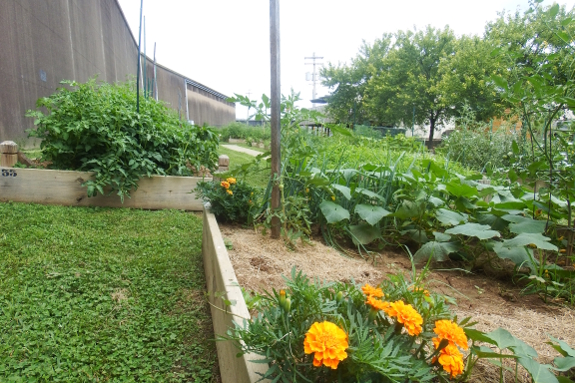
The Parkersburg community
garden sits right next to a giant flood wall.
It was built in 1950 with a
gate that can be closed in case of really high waters.
According to google it has never needed to be closed.
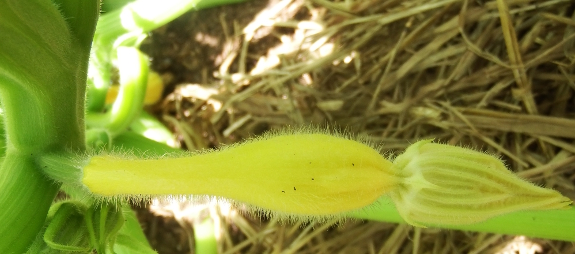
You're probably aware
that tomatoes won't set fruits when temperatures exceed 85. But did you
know that summer squash can be equally sensitive to wild weather?
Mark and I have been
eating summer squash for a week or two now, and I only realized that
was a fly in the ointment when I went to show off flowers to the
neighbor kids. "Can you tell which ones are females?" I asked...then
furrowed my brow as I realized there were almost no female flowers
currently present on my plants.
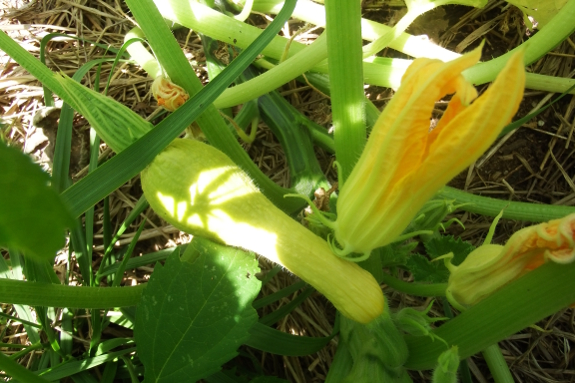
While it's perfectly
normal for squash plants to open lots of male blooms and no females as
they're maturing, after that I'm used to seeing at least as many
females as males. However, we've had really hot weather recently and
I've only been watering plants that appear to need it (not the squash).
Apparently that stressed the plants enough to make them abort most of
their female fruits.
I've now added squash
back into my watering rotation, and will hope that's enough to put
their offspring back on our plates. I'm sure we'll be sick of squash by
autumn, but for now it's a treat to harvest each ripe, yellow fruit.
We attached a garden hose
hook up point to our washing machine intake.
Anna and I have a debate
about hooking up the dryer. She is fine with not hooking it up....I
want to have it available on cold rainy days when we don't want to hang
clothes outside.
It might take me a while to
win that one. Meanwhile we will use the dryer vent door to access the
new garden hose hook up and push it back inside when Winter comes.
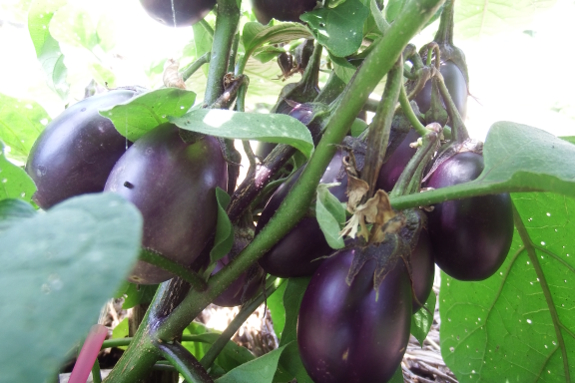
Three weeks later, it's
time for a followup on my eggplant
varieties post. How
have Patio Baby and Black Beauty fared now that summer is in full swing?
Patio Baby is both
better and worse than expected. The plant is so heavily loaded with
developing fruits that I had to stake the stem upright, and we've
enjoyed a handful of tasty meals picked from the single plant.
On the other hand, I can tell it hasn't bothered to send roots out into
the surrounding soil. If I don't give it a daily half gallon of water,
the plant wilts like crazy by the middle of the afternoon.
My conclusion? If I had
to do it all over, I would keep Patio Baby on a patio where it's easy
to water and keep an eye on.
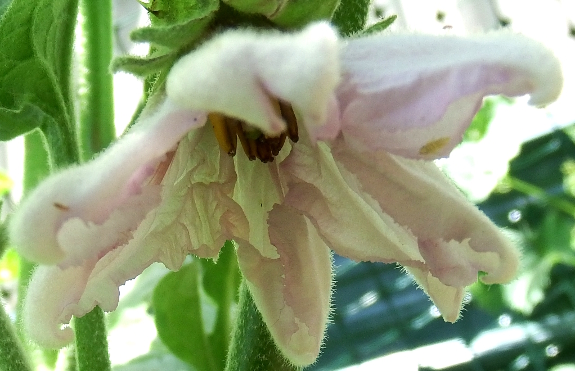
Black Beauty, in
contrast, is slow and sure and just now blooming. I haven't watered the
plants at all except when I happen to be hitting the nearby bush beans
in the same row. But Black Beauty is fine with the neglect...I'm just
not sure if the plants will manage to set fruits before winter frosts
come to call.
Among both varieties,
though, there's a major success to report on --- flea beetles haven't
been much of a problem after the plants spent their first three months
in pots. I always love it when a type of produce I thought wasn't worth
growing organically is suddenly easy with a simple tweak, and that
appears to be true in this case.
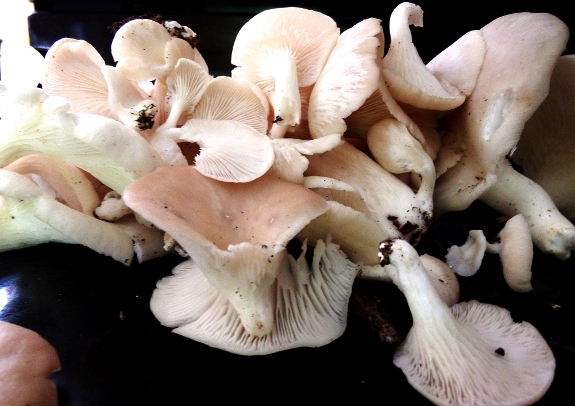
We haven't had any
appreciable rain for a week and a half...but apparently it's mushroom
season anyway. I'm guessing the cooler weather is what brought out this
flush of oyster mushrooms at the park. All I know is that I could only
fit a quarter of the available caps into the scooped-up front of my
shirt without exposing my belly button. Clearly I need to start
bringing a harvest bag with me into the woods!
Our kitchen floor demanded
some attention this week.
Luckily the leak was easy to
track down but the damage was not good.
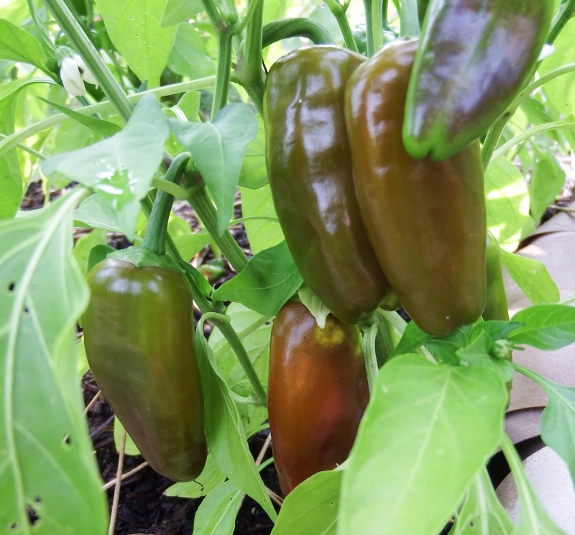
Mark's hose
hookup has pushed
the garden into much faster growth over the last week. The peppers are
ripening...
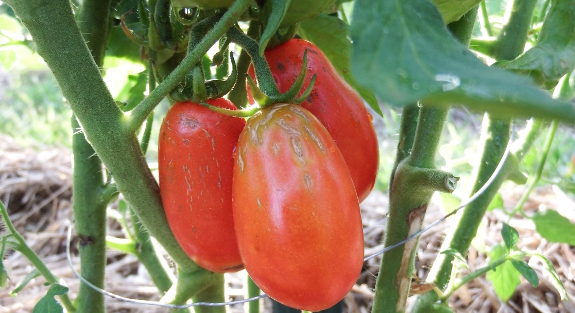
...as are the first few
tomatoes. We're starting to harvest cucumbers in multiples now rather
than one per week, and the
summer squash are holding onto their female flowers rather than
aborting them before they can turn into fruit.
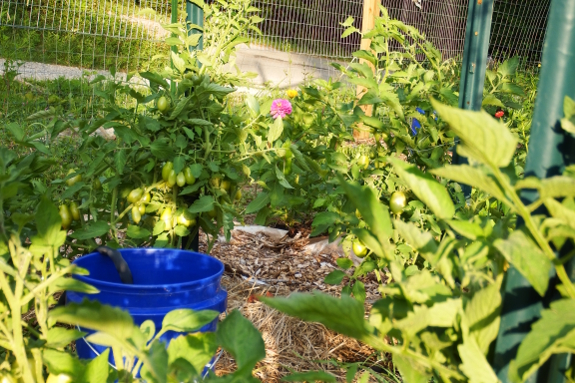
On the other hand, this
garden is still much less turbo-charged than my Virginia one. A decade
of soil building can't be replaced overnight. But blight has been
minimal, the fenced acreage is perfect for keeping me sane, and I
suspect I'll love this garden even more than my previous one within a
couple of years.
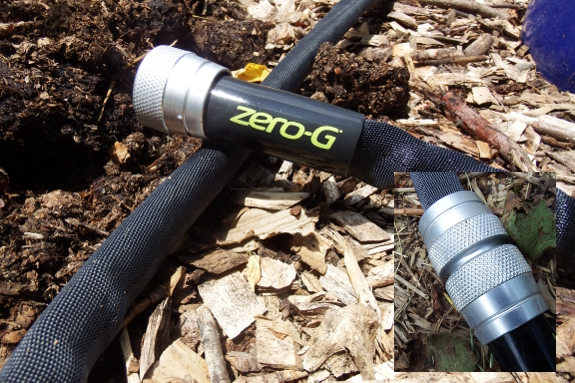
Hose technology has
improved since we last went shopping.
This hose looks so high-tech that Anna
gave me the fish eye when I brought it home. "How much did it cost?"
she demanded.
After learning that the
price was half of what she'd guessed, she fell in love with its light
weight, flexibility, and easy connectors on either end.
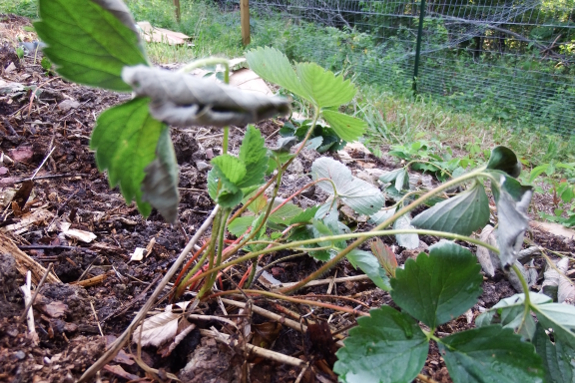
When we moved in here
last October, I brought along some strawberry plants. With no idea
where I'd later want them, I just stuck them in the ground near the
trailer.
Fast forward ahead to
the present day, in which deer are dining like crazy on anything
outside our garden fence. So rather than just transplanting runners
into a new spot the way I usually would have done, I dug up every
single strawberry plant.
Summer-transplanted
strawberries wilt like crazy the first couple of days after they've
been moved. But a little water morning and evening quickly pushed ours
over that hump. Some of the older leaves won't make it (and a couple of
the plants similarly bit the dust). But the rest are now resilient to
normal summer temperatures and should fruit for me next year.
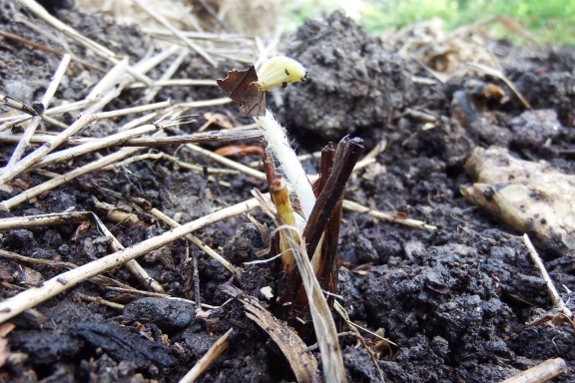
Meanwhile, I expanded
the planting with twenty almost-dormant Mara Des Bois from an online
nursery. Most of my favorite sources had already stopped shipping
bare-root strawberries for the season, so it's possible these little
guys won't fruit next spring. However, they're everbearers, so if
nothing else we should taste this much-lauded variety a year from now.
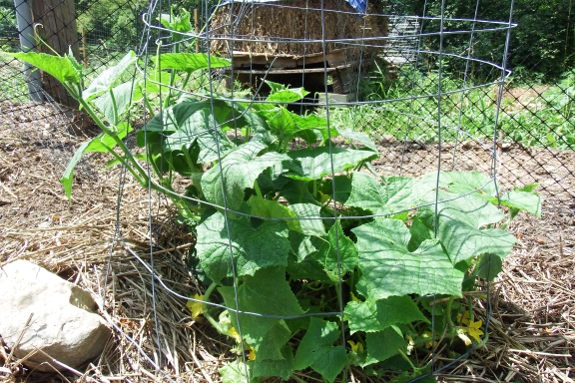
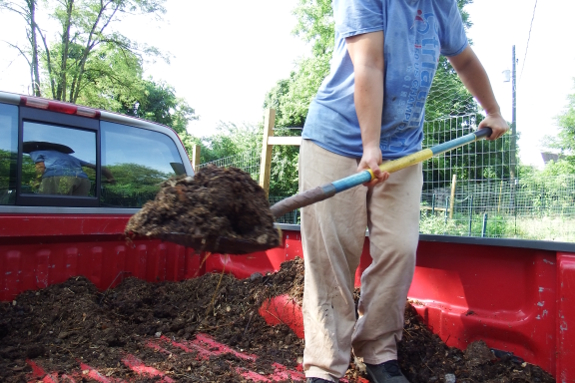
You know you live in a
crunchy area when the free horse manure is fought over. I'm currently
grabbing the precious organic matter when it's only a couple of weeks
old and letting it mellow on our farm to make sure I'll have enough.
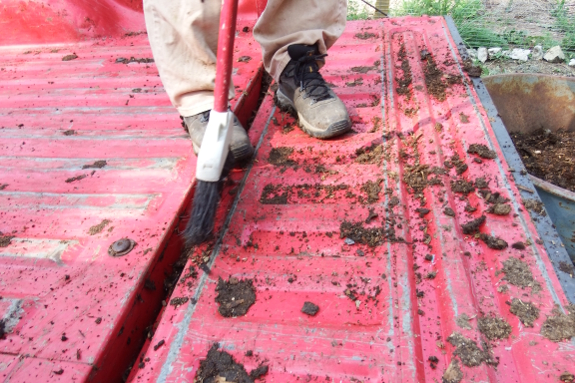
And, yes, I love my
manure so much I even sweep out the truck once I'm done.
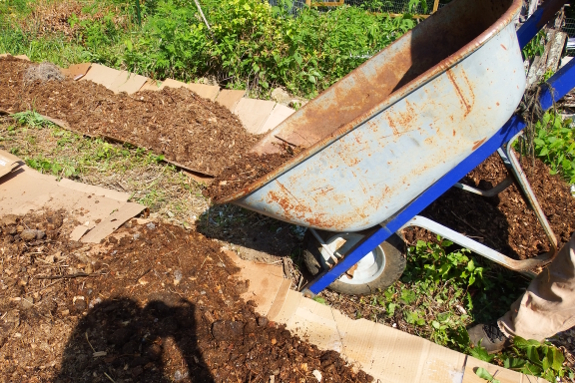
That last wheelbarrow
goes a long way toward creating new garden beds! These will be planted
in lettuce and kale next month.
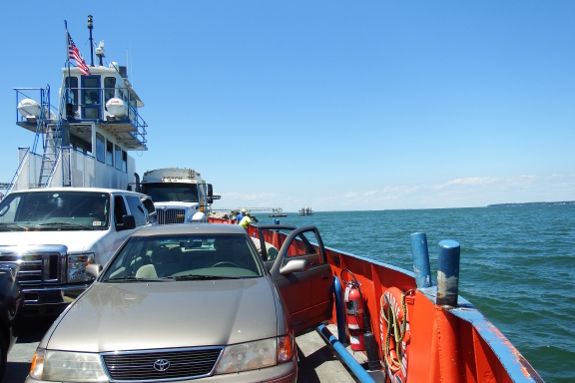
Taking the ferry to Kelleys island was a fun way to experience the western basin of Lake Erie.
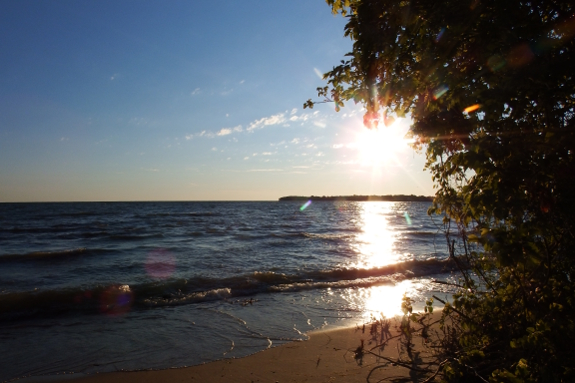
Mark and I snuck away to
Kelleys Island this week, which is almost the closest spot on the Great
Lakes to us and is definitely one of the most natural. I'm a bit afraid
to tell you how much we loved it or the island may be swamped the next
time we try to visit. On the other hand, the $72 ferry ride (two people
and a car, round trip), must cut down on what would otherwise be a
total inundation.

Oh, but wait! There was
a bit of a dud involved in this exploration. Inscription Rock, a Native
American petroglyph, was pretty disappointing. The 300- or 400-year-old
carvings in a big limestone boulder have pretty much worn away despite
the roof erected in the 1980s. On the other hand, the history museum
(from whence I stole this series of images) filled in the blanks very
nicely and made me almost feel like I'd seen the original carvings.
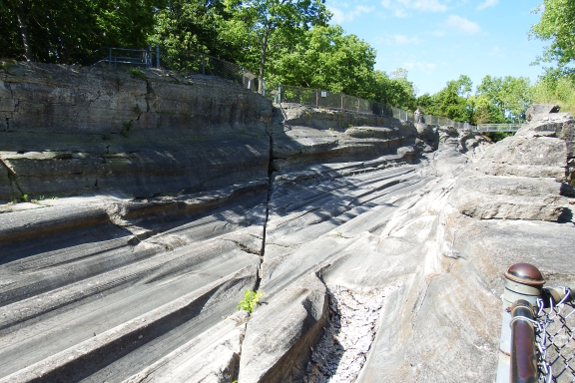
Everything else on
Kelleys Island was phenomenal. The glacial grooves were Mark's and my
second-favorite part of the island (although impossible to photograph
in their full glory). This massive gully carved out by a mile-high
glacier over 10,000 years ago is encircled by mind-bending educational
signs (albeit a bit hard to read at 40 years old). You can also find
smaller, unmarked grooves on the island if you look carefully. (I found
one set!)
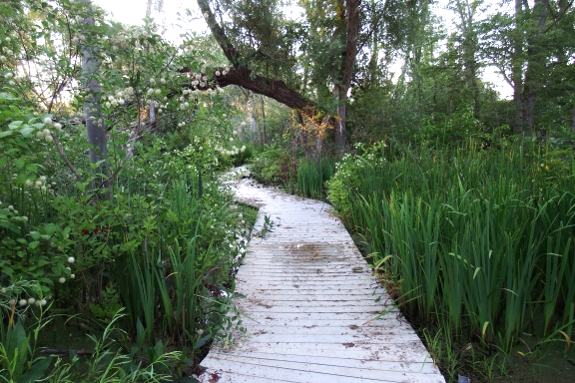
"So if glacial grooves
were only your second-favorite attraction, what was your favorite part?" I can hear you
asking. The North Pond Loop Trail, a nearly mile-long boardwalk through
an old-growth wetland (aka an embayment pond) was so beautiful I felt
like I was walking through a botanical garden...but one sculpted by
nature rather than by man.
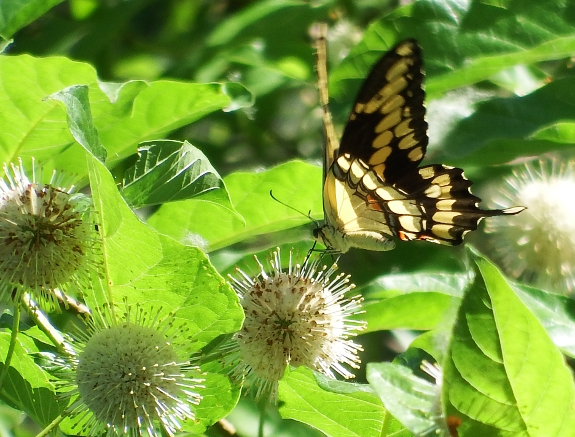
There were butterflies
and flowers and an out-of-the-way observation tower in which Mark and I
relaxed and listened to the waves on the nearby beach while watching
the world go by. Finding some place beautiful and alone to just sit is
probably our very favorite vacation activity, and we indulged
repeatedly.
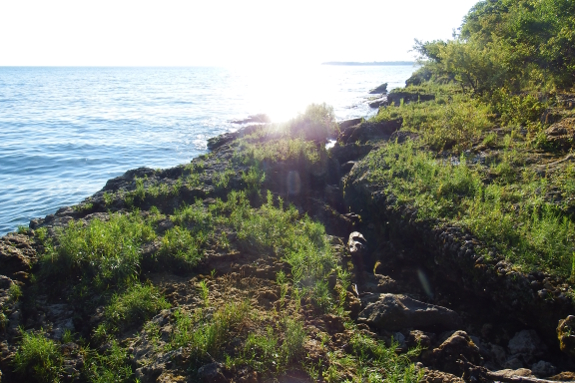
From a plant-geek
perspective, the alvar on the northwest side of the island was just as
amazing as the embayment pond. Also known as limestone pavement, this
iteration of the ecotype looked quite different from the one I'd
explored in the UK eighteen years earlier. The ocean-like Lake Erie was
right there, for one thing, so the glacier-scraped rock wasn't as bare
as the pavement I remember seeing inland. And the slap of the waves up
through cracks in the alvar lent an auditory edge to the pavement on
Kelleys Island that the other example didn't possess.
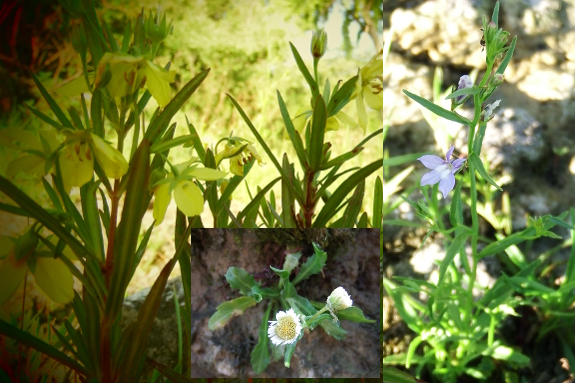
On the other hand, those
same features made the Kelleys Island alvar feel a bit pedestrian at
first. What's the big difference, I wondered, between this and a rocky
beach by any sea?
It wasn't until I got down on my hands and knees and started peering at
(and photographing) the tiny, rare flowers that barely manage to cling
to the rock that I understood what makes the Kelleys Island alvar so
special...and delicate. No wonder it took me two tries to actually find
the habitat, which is close to but not actually on any trail.
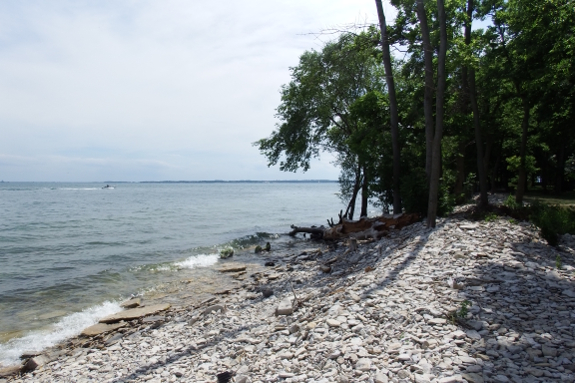
Speaking of special, I'd
be remiss if I didn't mention the preserves I missed. (After all, we
were only there for a day and a half, and I spent quite a bit of time
lounging in the airbnb's
semi-private beach.) The brochure I picked up at the ferry dock's
visitor center on the way out tempted me with the Huntley-Beatty
Preserve for an example of a man-made alvar, the Scheele Preserve for
rare rock elms, wafer ash, and citrus, and the East Quarry for fossil
hunting. I guess we'll just have to go back...although I'm thinking Pelee Island might be on the agenda as well.
We upgraded from a watering bucket to the YardSmith watering wand.
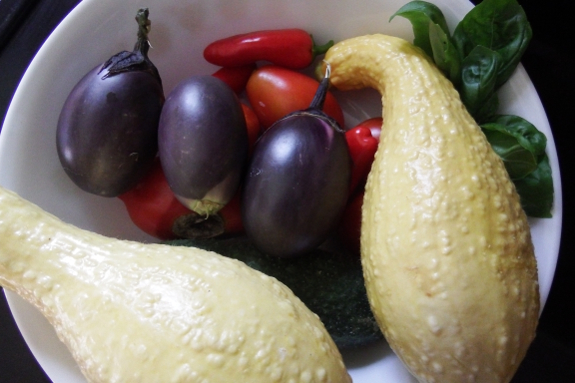
For the last ten months, Mark and I have been weekend homesteaders
rather than whole-cloth farmers...and it's been fun! I just cruised
through The Weekend
Homesteader --- written, ironically, when I wasn't a weekend homesteader ---
and discovered that we've hit 75% of my suggested projects during our
first ten months on our new plot.
Of the projects not yet broached, I think we're going to leave chickens
and bees to our neighbors for now. But I suspect rain barrels, worm
bins, having enough excess food to preserve, soil testing, and at least
a couple of fruit trees will be on our agenda for the year ahead.
Which is a long way of saying --- this might be a two-year-project book
instead of a one-year-project book, but it has stood the test of time
even for its author. No wonder the title is still my non-fiction
bestseller six years after publication and has nearly 100 reviews on
Amazon. The Weekend
Homesteader is also marked down to $1.99 today, so nab your copy now if
you want to join me weekend homesteading during the year ahead!
Installing a couple of shelves for Anna's closet and securing the top shelf.
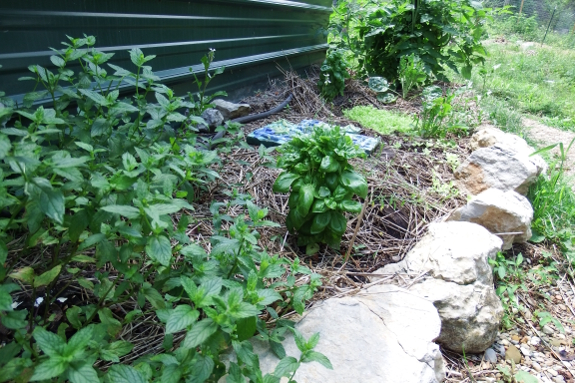
Just outside our main
door, the bed up against the trailer faces west toward a stand of trees
and barely gets any direct sun. I could have put flowers there, but I
wanted to set out edibles. But what enjoys nearly full shade?
Herbs are a great choice
for this kind of situation since they often get too
strong-flavored/bitter under the peak summer sun. Both the mint and the
basil in this bed grow slower than their compatriots in the main
garden, but they taste a lot better at this time of year too.
An ultra-early lettuce
bed is another good solution. In fact, my mid-July planting is doing so
well, I'm thinking of setting out some spinach seeds while the ground
is still wet and cool.
How about you? What
edibles have you installed in shady locations in your garden with good
results?
Liquid Nails is one of my favorite building products to fill in small gaps.
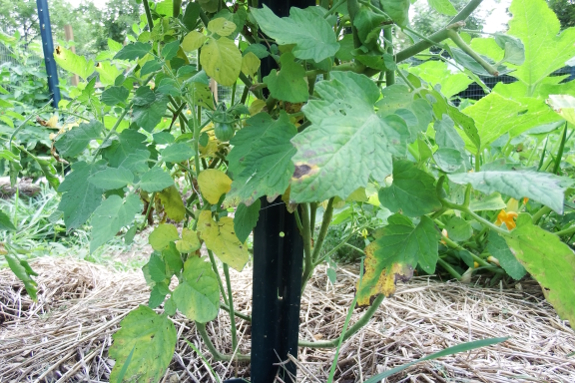
We had a rainy week here
in Ohio, and suddenly all of the gardeners started talking about tomato
blight. Unfortunately, I've seen a lot of misinformation floating
around in that department. So this post is my attempt to debunk a
couple of myths.
Myth
1: Blight came in with my compost. While it's possible that you
brought in tomato blight in one of your store-bought supplements, it's
most likely this fungal disease floated through the air from someone
else's garden to yours. Store-bought tomato plants can sometimes bring
blight along with them. But unless the compost you bought was created
from diseased tomato plants, it's unlikely a soil amendment is at fault.
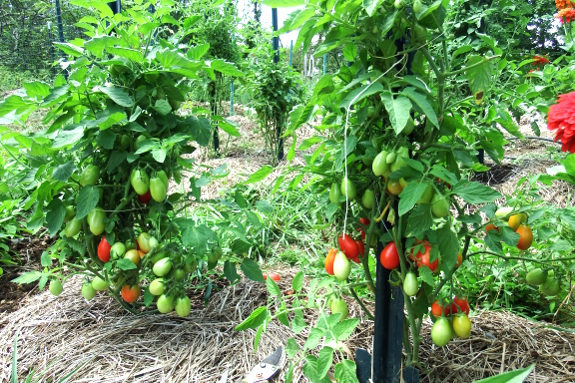
Myth
2: I'll plant African marigolds and beat the blight that way. Tomato blight refers to one
of several different fungal diseases while African marigolds are used
to combat some species of nematodes. Tomatoes can (rarely) suffer from
nematodes, in which case you'll see enlarged knots on the roots,
yellowing leaves, and general slow growth. So, sure, plant a cover crop
of African marigolds in next year's tomato bed if you're certain you
suffer from nematodes. Otherwise, I instead recommend manual
blight-control techniques to deal with your ailing
plants.
I'm glad to report that
our tomatoes enjoy Ohio much more than they did Virginia. I've pruned a
couple of times to knock back septoria leaf spot, but our plants are
still thriving despite the onset of the mildest of the
trio of common tomato fungal diseases.
Instead of using twine to
support tomato plants we wanted to try some of this new foam tie to see if it would
last multiple seasons.
The reviews mention how it is
also good for organizing device cords.
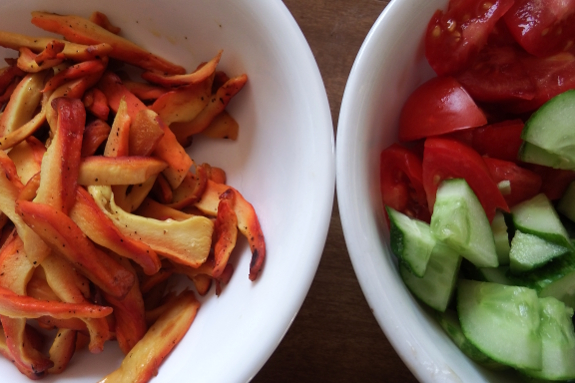
Along with downgrading
our homesteader status to weekend level has come a similar upgrade
in the amount of time I get to spend in the woods. In fact, I've worked
a hike into my daily schedule --- an hour or two of editing in the
morning is followed by a two-mile stroll through the nearby park while
I think the day's chapter out.
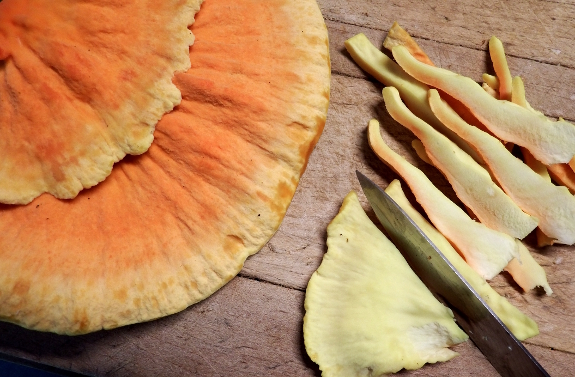
More time in the woods
means more wild mushrooms collected. And, in the process, I've noticed
that wild mushrooms taste so very different if picked at their peak
flavor versus even just a few hours later. This chicken
of the woods, for example, was one of the best mushrooms I've ever
eaten. I'm so glad my characters recommended I take that particular
path.
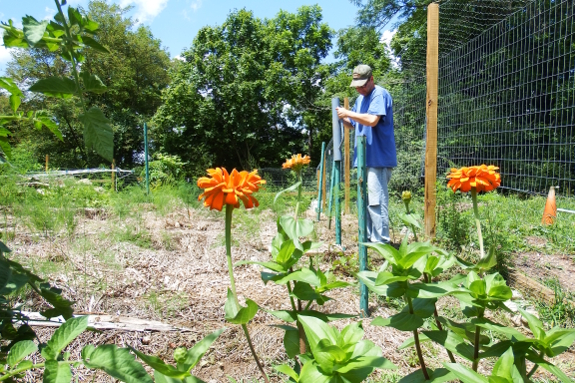
Making a line of fence posts to support some galvanized wire for young asparagus.
Want more in-depth information? Browse through our books.
Or explore more posts by date or by subject.
About us: Anna Hess and Mark Hamilton spent over a decade living self-sufficiently in the mountains of Virginia before moving north to start over from scratch in the foothills of Ohio. They've experimented with permaculture, no-till gardening, trailersteading, home-based microbusinesses and much more, writing about their adventures in both blogs and books.
